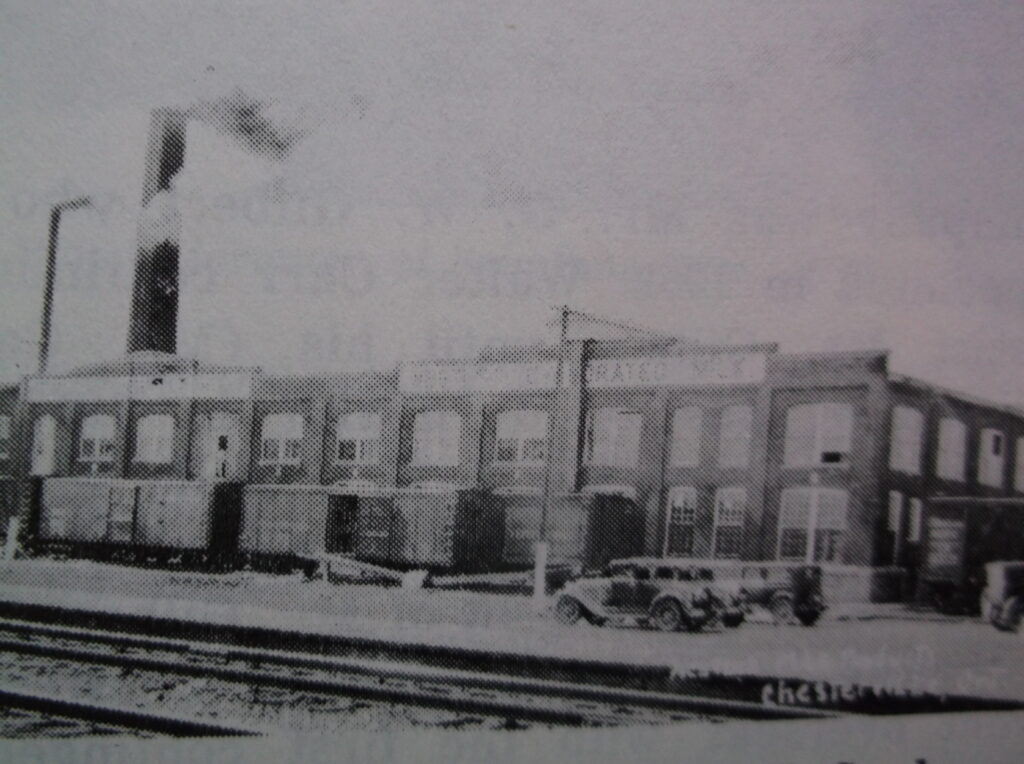REMARKABLE CORNWALL & SDG – FARMING
THE “MAC,” the APPLE DUNDAS GAVE THE WORLD.
Martha Stewart may rank the “Mac” fourth in her rating of the world’s best apples, but locally she wouldn’t find any support for her opinion about the apple Dundas County gave the world.
The “Mac,” along with other seedlings was “discovered” by settler John McIntosh while clearing an overgrown part of his farm in present day Dundela, in 1811. Slowly selling the tree’s seedlings throughout the 1820s, tradition relates that in 1830 a local farmhand taught one of John’s sons, Allen, how to cut and graft the tree that would produce the “Mac.”
In keeping with rural custom, McIntosh, dubbed the fruit “Granny,” in honour of his wife Hannah Doran, “…who had nurtured the tree.” His neighbours thought this was too ordinary of name “…for an uncommon apple,” and persuaded John to rechristen it the McIntosh Red, no later than 1836.
Despite the apple’s local popularity, it remained largely unknown until John’s sons Alexander and Allen opened a nursery selling the seedlings from 1835. Allen, an itinerant preacher, now became Canada’s “Johnny Appleseed,” handing out the apples’ seedlings everywhere he went. By 1876, Allen’s son Harvey Austin had successfully turned the nursery into a busy commercial enterprise selling McIntosh seedlings province wide. Then in 1900, E.D. Smith from Winona, in Southern Ontario discovered the Mac giving the apple an international following.
The original tree was partially burned in 1894, but lived until 1906.
Today every “Mac” in the world is somehow related to that first tree grafted in Dundela.
Sadly, with the exception of some government heritage plaques, Dundela, the “Mac’s” home,is barely promoted for the world class tourist destination it is.
CHESTERVILLE – was once the CONDENSED MILK CAPITAL of CANADA.
With its deep roots in farming, Chesterville was dubbed the “Land of Milk and Honey,” and home to innovative food processing. Farm wives were reputed to coax their dogs into churning butter, while dogs energised Asa Ball’s grist mill.
The arrival of the C.P.R in 1887, changed everything for the village’s 500 inhabitants. Historian J.G. Harkness wrote, “New stores and better business places were erected,” and within three years the population totaled 750. The railway opened up markets for local agricultural products across North America. A refrigeration company and two grain storage facilities, were built north of the railway tracks to expedite the sale of grain and livestock to urban markets.
The production of condensed milk arrived in Chesterville, in 1907. While Truro, Nova Scotia can claim to be the first place to process condensed milk in Canada, in 1883, it was in time eclipsed by Nestle’s Chesterville facility, but I am getting ahead of myself.
In a November 21, 1907, advertisement in the “Chestervillle Record,” the Maple Leaf Condensed Milk moved the calendar forward proclaiming:
Spring is Here The wheels of the Condensery will turn faster and faster, as your cows freshen and the flow of milk increases. Each day brings a larger supply, and each day finds us laying plans to handle the increased product. So it is we gauge our business to yours, making for you a permanent market for your milk from the slackest part of the winter season, through the muddy roads of spring time and up to the flush of milk in June – all the year through in city and town and village the Condensery finds for you a market for your dairy products.
Three years later the Canadian Condensing Company (I believe this is the same company, with a different name, and is the refrigeration plant that various records refer to) placed a wanted ad for boys 16 – 19 and Young Woman over 16 to start work immediately at their plant. Soon afterwards Canadian Condensing manager D.G. Widden stated that they were carrying out plant improvements and were now shipping a car load of milk every other day to Boston.
In 1916, American based Hires Condensed Milk (of root beer fame), took over under the supervision of G.F. Sayles and his assistant Heber Hooks. Two years later Hires sold Maple Leaf Condensed Milk to Anglo-Swiss Nestle. Sayles was now transferred to the U.S., while Hooks became manager with the assistance of Chesterville native J.F. Dwyer.
In 1920, machines were installed to produce evaporated milk and two years later it was outfitted for the production of baby food. All the while condensed milk processing continued to grow and in 1952, the “Ottawa Citizen,” reported that Nestle’s Chesterville plant, under the management of Walt Carr, was the largest producer of condensed milk in Canada, (if not before) shipping more than a million cases of condensed and evaporated milk annually, that locally Nestle employed 120 men and women and spent $2 million a year ($22 million, 2023) purchasing milk from local dairymen.
The Chesterville factory continued to diversity to include such products as Nestle Quick (NewQuick), in 1955, seven years after it had been developed in the United States, followed by Nesquick syrup and flavoured Taster’s Choice instant coffee in 1991.
As we are all unfortunately know, this all ended when Nestle’s left Chesterville in 2006.
CANADA’S LARGEST DAIRY INDUSTRY.
Space doesn’t allow me to say more than a few words about the growth of the local cheese factory industry, that was started at the Grey’s Creek Cheese Factory around 1867, except to note that by 1919 Cornwall and United Counties’ 2,000 milk producers , or patrons, could claim to be the largest dairy industry in Canada.
THE FIRST HOLSTEIN FRISIAN COWS in CANADA, 1881.
Dundas County farmer, Michael Cook introduced the “super” milk producing Holstein Frisian cows to Canada in 1881, ensuring the growth of Canada’s dairy industry, especially cheese production.




